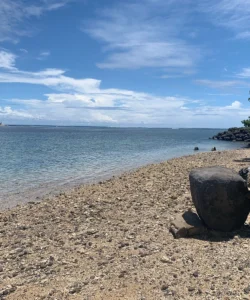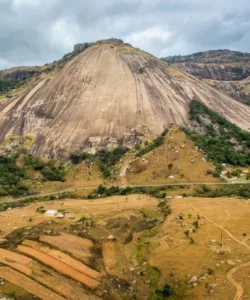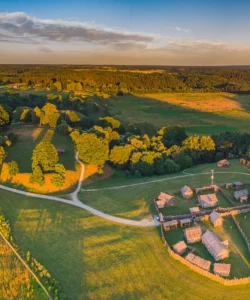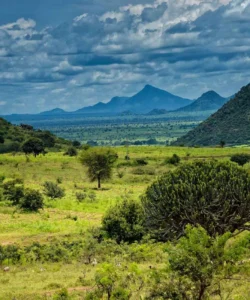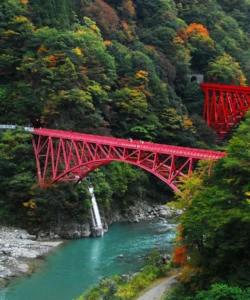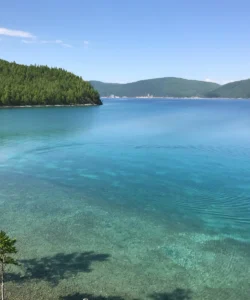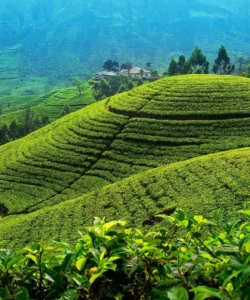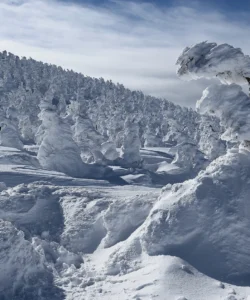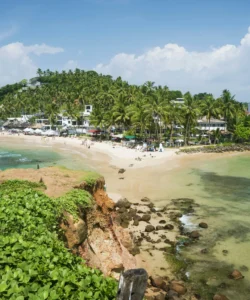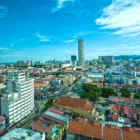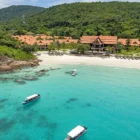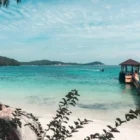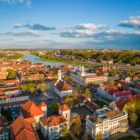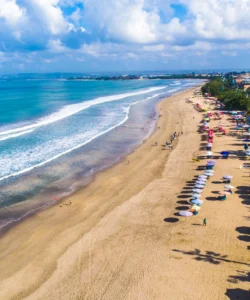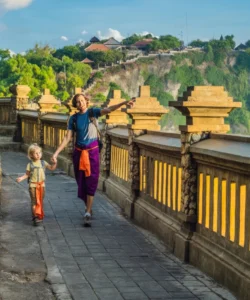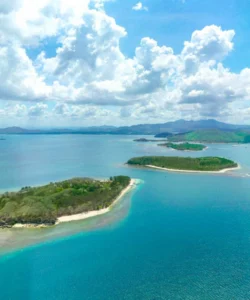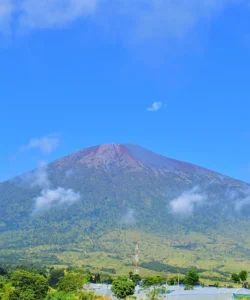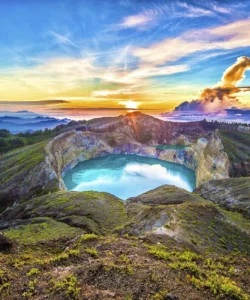Mount Bromo is an active volcano in East Java, Indonesia, famous for its otherworldly landscapes and spectacular sunrise views. It’s not the tallest mountain in the region, but its unique setting within a vast caldera, surrounded by a “Sea of Sand,” makes it one of Indonesia’s most iconic and photogenic natural wonders.
Name: Mount Bromo (Malay: Gunung Bromo; Javanese: Gunung Bromo)
Address: Area Taman Nasional Bromo Tengger Semeru, Ngadisari, Sukapura, Probolinggo, Jawa Timur, Indonesia, 67177.
Mount Bromo is part of the Bromo Tengger Semeru National Park, which covers a massive area in East Java. The main gateway village for visitors is Cemoro Lawang.
How to Get There:
Access to Mount Bromo typically involves flying to a major city in East Java and then arranging further transport.
- By Air: The most common airports to fly into are:
- Juanda International Airport (SUB) in Surabaya: About a 2-3 hour drive to Probolinggo.
- Abdul Rachman Saleh Airport (MLG) in Malang: Also about a 2-3 hour drive to the Tumpang area.
- From Surabaya/Malang to Mount Bromo (via Cemoro Lawang or Tumpang):
- Tour Package (Recommended): The most common and convenient way is to book a tour package, often including transportation from Surabaya or Malang, a jeep tour within the park, and a guide. This is especially popular for the early morning sunrise trip.
- Bus to Probolinggo: Take a bus from Surabaya (Bungurasih bus terminal) or Malang to Probolinggo Bus Terminal. This takes about 2-3 hours.
- From Probolinggo to Cemoro Lawang: From Probolinggo, you’ll need to transfer to a local minibus (colt) or hire a jeep to Cemoro Lawang (approx. 1.5 hours). Minibuses usually leave when full.
- From Malang to Tumpang: If starting from Malang, you can hire a jeep directly from Tumpang, which is closer to the southern entrance of the park.
- Within Bromo Tengger Semeru National Park:
- 4×4 Jeep Tour: This is the standard way to explore the caldera. Jeeps pick up visitors very early in the morning (around 3 AM) from Cemoro Lawang (or other nearby villages) and drive to the sunrise viewpoints (like Mount Penanjakan or Kingkong Hill) and then across the “Sea of Sand” to the base of Mount Bromo.
- Horseback Riding: From the “Sea of Sand” to the base of the Bromo crater, you can hire a horse (for a fee) or walk (about 20-30 minutes).
- Hike to Crater Rim: From the base, there are about 250 steps to climb to reach the active crater rim of Mount Bromo.
- Park Entrance Fee: There is an entrance fee to Bromo Tengger Semeru National Park, which is usually included in tour packages.
Landscape and Architecture:
Mount Bromo’s landscape is a surreal, almost lunar environment, primarily shaped by volcanic activity. Its “architecture” is purely natural, sculpted by geological forces.
- Tengger Caldera: Mount Bromo is not a standalone mountain but part of the larger Tengger Caldera, a massive, ancient volcanic crater spanning over 10 kilometers in diameter. This vast depression, formed by past catastrophic eruptions, is the defining feature of the area.
- “Sea of Sand” (Lautan Pasir or Pasir Berbisik): Within the caldera lies a vast, flat expanse of fine black volcanic ash and sand, known as the “Sea of Sand.” This eerie, desert-like landscape is often covered in mist in the early mornings, creating a mystical and otherworldly atmosphere. Visitors traverse this area by jeep or on horseback.
- Mount Bromo’s Active Crater: Bromo itself is a relatively small, active somma volcano (a volcanic cone within a larger caldera), standing at 2,329 meters (7,641 feet). Its most prominent feature is its constantly smoking, active crater, which often emits white or grey sulfuric fumes. Visitors can hike to the crater rim to peer into its steaming depths.
- Surrounding Peaks: Alongside Bromo, other peaks rise from the Sea of Sand, including the perfectly conical Mount Batok (an inactive volcano). In the distance, the majestic Mount Semeru (3,676 meters), Java’s highest and one of Indonesia’s most active volcanoes, can often be seen smoking, adding to the dramatic volcanic panorama.
- Viewpoints: Elevated viewpoints, particularly Mount Penanjakan (2,770 meters) and Kingkong Hill, offer the most iconic panoramic views of the entire Tengger caldera, encompassing Mount Bromo, Mount Batok, and Mount Semeru, especially at sunrise.
- Pura Luhur Poten: Located in the Sea of Sand at the foot of Mount Bromo, this Hindu temple (Pura Luhur Poten) is a simple but culturally significant structure built by the Tenggerese people. Its existence within the stark volcanic landscape is a unique architectural and spiritual contrast.
What Makes It Famous:
- Spectacular Sunrise Views: Mount Bromo is world-famous for its breathtaking sunrise views from various viewpoints. As the sun rises, it gradually illuminates the mist-filled caldera, revealing the silhouettes of Bromo, Batok, and Semeru against a sky of vibrant colors – a truly mesmerizing and highly photographed spectacle.
- Otherworldly “Sea of Sand”: The vast, desolate expanse of black volcanic sand that surrounds Bromo’s crater creates a unique, almost lunar landscape, unlike anything else in Indonesia.
- Active Volcano Experience: The opportunity to hike to the rim of an active volcano and peer into its steaming crater is an exhilarating and humbling experience, feeling the raw power of nature.
- Cultural Significance (Tenggerese People): Mount Bromo holds deep spiritual significance for the local Tenggerese people, an indigenous Hindu community who consider the mountain sacred. Their annual Yadnya Kasada festival, where offerings are thrown into the crater to appease the mountain gods, is a unique cultural event.
- Accessibility for an Active Volcano: Despite being an active volcano, Mount Bromo is relatively accessible to a wide range of visitors, requiring only moderate fitness for the hike to the crater rim.
- Dramatic Landscape Photography: The stark contrasts, unique geological formations, and incredible light during sunrise make it a paradise for photographers.
Differences from Some Other Wonders:
- Active Volcano with Panoramic Caldera View: While other places have mountains (Mount Kinabalu, Malolotja) or ancient temples (Borobudur, Prambanan), Bromo’s fame is specifically tied to its status as an active volcano best experienced from panoramic viewpoints overlooking an entire caldera and other active/inactive cones. This specific volcanic “panorama” is distinct.
- “Sea of Sand” Landscape: The vast, flat expanse of volcanic sand (the “Sea of Sand”) is a highly unique and visually striking geological feature that isn’t common around other famous volcanoes or natural wonders.
- Cultural Practices at the Crater: The active Hindu rituals of the Tenggerese people, particularly the Yadnya Kasada festival with offerings thrown into the crater, offer a deeply rooted cultural interaction with a natural phenomenon that is rare elsewhere.
- Jeep-Based Exploration to Sunrise Points: The iconic Bromo experience involves an early morning 4×4 jeep ride to a dedicated viewpoint, then a short hike/horse ride across the sand sea to the crater. This logistical structure of accessing the key sites is very characteristic of Bromo.
- Contrast with Nearby Ijen: While often visited as part of a multi-volcano trip with Ijen Crater (known for its blue flames and turquoise acidic lake), Bromo’s appeal is more about the dramatic sunrise over multiple peaks and the “sea of sand,” rather than a specific colorful crater lake or nighttime phenomenon.
- Accessible Crater Rim (for its type): Compared to many other active volcanoes that might require technical climbing or are entirely restricted, Bromo’s crater rim is relatively easy to reach via steps, offering a close-up encounter with its active fumaroles.
Mount Bromo Photos:






























